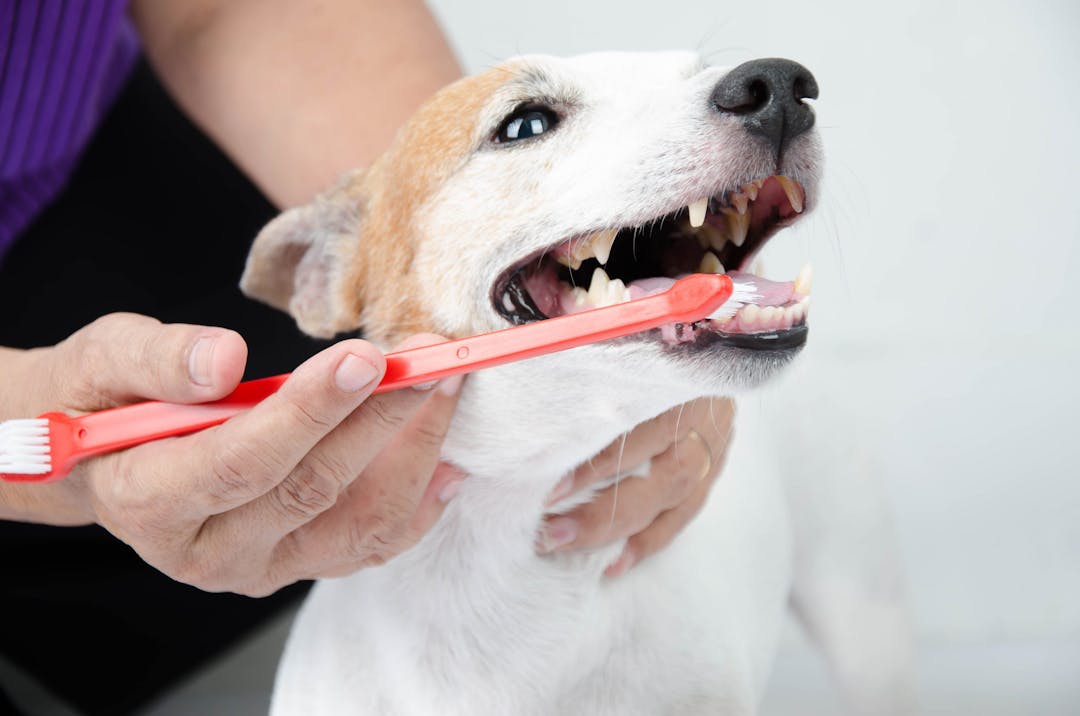When it comes to tooth brushing, we all could use a little more help. As pet owners, it’s important to know your dog’s overall health, and what goes on inside your dog’s mouth can affect a lot more than just their dental health.
Fear not, once you read these instructions, you’ll know them like the back of your hand in no time! Let’s dive in.
How to Keep Your Dog’s Teeth Clean
First things first, there is indeed a good time for your doggy dental care routine. And when we say routine, that’s exactly what we mean. Building up a routine for your dog’s dental health with your pup makes them less anxious when you whip out the ol’ dog toothbrush. After all, the best time for dental cleanings, or anything at all, is when your dog is comfortable and at ease.
Your doggo’s teeth must get brushed often (at least 3 times a week.) Otherwise, it could lead to infection, tartar buildup, bad breath, and we’re not just talking gum disease.
How to Brush Your Dog’s Teeth
Just like humans, dogs have to clean their teeth and gums too. Dental hygiene doesn’t stop at humans!
Step 1: Grab what you need
In this case, you’ll need a dog toothbrush. For small dogs under 35 lbs, a finger toothbrush will do just fine. For large dogs, you may not want to use a finger brush.
Dog toothpaste is also a huge one, as it must be certified for dogs. The ingredients in human toothpaste may have serious effects on your dog, and we don’t want that.
Step 2: Get your dog acquainted with what’s going to happen
Again, it’s with utmost importance that your dog is comfortable, and understands what’s happening. We recommend treating your doggo to a small amount of toothpaste for them to understand the taste and texture. Not too much though, the right toothpaste for your dog will be extra tasty for them, we’re talking bacon and peanut butter, you know the drill.
Also, try sitting in a nonthreatening position and lifting their mouth to place your finger on their gum line. When you do this, it’s preparing them to have something foreign touch a part of their mouth that isn’t touched very often.
Next, bust out the handy toothbrush and give it a go. Brushing at a 45-degree angle will be the most comfortable for them, and will be best to remove plaque buildup.
Just like when you brush your teeth, adding a circular motion will help you clean not only the surfaces of the teeth but your dog’s gums as well. Aim to get not only the front canines but the back teeth and molars as well. Minor bleeding is okay, but if that turns into more blood down the line, we recommend speaking to a vet, as if could be a sign of dental problems, such as gum disease.
Before, during, and after the teeth cleaning process, it’s important to remain reassuring. Go in with a calm, loving demeanor during the process will help your little friend remain calm as well.
After it’s over, throwing them a dog treat wouldn’t hurt either. Once they know they did something and got rewarded, they’ll be more inclined to repeat the same behavior.
Toothpaste and toothbrushes our vets recommend:
- Vet’s Best Enzymatic Dog Dental Kit
- Virbac C.E.T. Enzymatic Poultry Flavor Dog & Cat Toothpaste
- Indigo Pet Co “World’s Most Effective Dog Toothbrush”
- Nylabone Advanced Oral Care Finger Brush Dog Toothbrush
Sometimes cleaning your dog’s teeth can be hard, and even frightening for both of you, especially the first time. If your dog didn’t like it this time, there’s no harm in calling it quits today and trying again at another time. There are so many factors that go into doggy stress levels, that it very well just might not be the right time. Be the patient, loving, and caring pet parent we know you are – you’ll both get the hang of your pet’s oral health sooner than you think!
If you have questions about brushing your dog’s teeth, you should always speak with a licensed veterinarian. Talk to a vet now.





